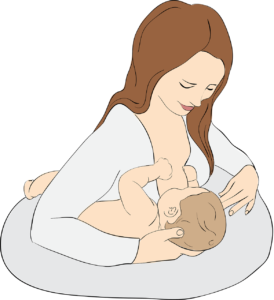
Jessica’s SIgA levels have fairly consistently gone down ever since I (mom) stopped nursing her. These are the levels since late 2017.
November 2017 SIgA 167 range 51-204
September 2018 SIgA 153 range 51-204
December 2018 SIgA 140 range 51-204
July 2019 SIgA 186 range 51-204
*****Stopped nursing December 2019
February 2020 SIgA 29.9 range 30-275
July 2020 SIgA 25.8 range 30-275
December 2020 SIgA 77.2 range 30-275
April 2021 SIgA 56.5 range 30-275
September 2021 SIgA 14.5 range 30-275
April 2022 SIgA 20.7 range 30-275
February 2023 SIgA 25.4 range 30-275
Secretory IgA’s Complex Roles in Immunity and Mucosal Homeostasis in the Gut
Secretory IgA (SIgA) serves as the first line of defense in protecting the intestinal epithelium from enteric toxins and pathogenic microorganisms. Through a process known as immune exclusion, SIgA promotes the clearance of antigens and pathogenic microorganisms from the intestinal lumen by blocking their access to epithelial receptors, entrapping them in mucus, and facilitating their removal by peristaltic and mucociliary activities. https://www.ncbi.nlm.nih.gov/pmc/articles/PMC3774538/.
Role of Retinoic Acid in the Imprinting of Gut-Homing IgA-Secreting Cells
IgA is the most abundant immunoglobulin isotype produced in the body (around 3 g/day) and it is estimated that around 80% of all IgA-ASCs reside in the gut mucosa 1,2. Mice either lacking IgA or impaired in its secretion are more susceptible to intestinal toxins and pathogens 3,4. In addition, migration of B cells and ASCs to the gut is critical for conferring protection against intestinal pathogens 5-9. Therefore, both IgA secretion and homing of ASCs to the gut are important in conferring protection at this anatomical site.
It has been reported previously that either IL-5 or IL-6 can influence IgA secretion 100-110. In fact, RA-induced IgA secretion requires either exogenous IL-5 or the presence of T cells producing this cytokine 84,96. Also, RA induces autocrine production of IL-6 by B cells, which may further contribute to IgA secretion 111. Moreover, both RA and IL-6 are required for optimal IgA induction by GALT-DCs in vitro 60,61. Furthermore, RA plus either IL-5, IL-6 or LPS synergize and are sufficient to induce IgA secretion by activated B cells in the presence of non-intestinal DCs 61,62. However, IL-5, IL-6 or LPS are probably not directly involved in specific IgA class-switching but are rather permissive for immunoglobulin class-switching by inducing activation-induced cytidine deaminase (AID, an essential enzyme for immunoglobulin class-switching and somatic hypermutation) 79,112 or by promoting proliferation/differentiation of already switched IgA plasmablasts 10,113.https://www.ncbi.nlm.nih.gov/pmc/articles/PMC2663412/.
TPN decreases IL-4 and IL-10 mRNA expression in lipopolysaccharide stimulated intestinal lamina propria cells but glutamine supplementation preserves the expression
Total parenteral nutrition (TPN) decreases intestinal IgA and levels of Th2 cytokines, interleukin (IL)-4, and IL-10 within the supernatants of intestinal homogenates. These cytokines are known to stimulate IgA production in vitro by cells of the gut-associated lymphoid tissue (GALT). Glutamine (GLN) supplementation of TPN normalizes GALT mass and cytokine levels. Because intestinal homogenates contain mucosa which itself is a source of cytokines, it was unclear whether cytokines change within the GALT itself. This study investigates dietary effects on IL-4 and IL-10 cytokine mRNA expression within isolated GALT lamina propria cells after lipopolysaccharide (LPS) stimulation. https://pubmed.ncbi.nlm.nih.gov/11303733/.
Immunoglobulins play a critical role in immune function: they act as antibodies that prevent you from becoming ill. Your B cells produce immunoglobulin, and sometimes your body can slow the manufacturing process. Your physician may recommend traditional therapies to boost immunoglobulin production, although you can also include certain nutrients in your diet to assist with this action.
Vitamin A
Eating foods high in vitamin A may offer benefits for your immunoglobulin levels. The Harvard Medical School suggests that vitamin A influences B cells, a type of immunoglobulin. A study featured in the March 1994 issue of “Clinical and Diagnostic Laboratory Immunology” suggests that vitamin A increased the level of immunoglobulin in children as well. Include foods such as eggs, cream, liver and kidneys to get more vitamin A into your diet.
Zinc
Raise your immunoglobulin levels by consuming zinc. Research featured in the February 2010 “Journal of the Indian Medical Association” indicates that zinc boosts immunoglobulin levels in patients with tuberculosis. Oysters are particularly high in this nutrient, although you may also supplement your zinc intake by eating red meat, seafood, pork and poultry, baked beans, cashews, beans and cheese.
Vitamin E
Vitamin E is known to positively influence immunoglobulin quantities in blood. Evidence from the February 2008 issue of “Anatomia, Histologia, Embryologia” notes a correlation between vitamin E intake and immunoglobulin; although this study was carried out on chickens, human research is needed to confirm this finding. Eat foods such as liver, eggs, nuts, dark green leafy greens, sweet potatoes and avocado to get more vitamin E in your meal plan.
Lycopene
Lycopene, the compound that gives red and pink color to fruits and vegetables, may raise your immunoglobulin levels. A study in the November 2007 “Journal of Endocrinological Investigation” showed this improved the level of these cells in patients with diabetes. Tomatoes are an excellent source of lycopene, as are watermelons, apricots and pink grapefruits. Lycopene is most well known for preventing heart disease. https://www.livestrong.com/article/420556-the-best-foods-to-eat-for-promoting-healthy-cells/.
From John’s Hopkins Medicine website
Immunoglobulin A (IgA) is an antibody that’s part of your immune system. IgA is found in mucous membranes, especially in the respiratory and digetive tracts. It is also found in saliva, tears, and breastmilk.
IgA deficiency is a genetic health problem that can be passed down through families.
Most people with an IgA deficiency don’t have any symptoms.
There is no cure for IgA deficiency. Immunotherapy does not work to treat it.
Complications for IgA deficiency include asthma, diarrhea, ear and eye infections, autoimmune diseases, and pneumonia.
You can limit the spread of germs and illnesses by washing your hands often and staying away from large crowds.
Some people with an IgA deficiency are more likely to get frequent infections. These can include sinus, lung, and digestive infections. Some people with IgA deficiency also are more likely to have allergies, and digestive and autoimmune problems such as celiac disease or lupus. https://www.hopkinsmedicine.org/health/conditions-and-diseases/immunoglobulin-a-deficiency.
1) Probiotics
In a study (DB-RCT) with 47 people, a three-week daily intake of the probiotic L. reuteri increased IgA levels [1].
In 30 athletes, IgA substantially decreased after training in the placebo group, but not in athletes who took L. helveticus (DB-RCT) [2].
Chewing gum containing L. reuteri significantly increased IgA in the saliva (DB-RCT) [3].
Probiotics increased IgA levels and improved recovery in 40 children with burn injuries [4].
In a study (DB-RCT) of 66 pregnant women, high-dose multi-strain probiotics resulted in infants with higher IgA levels and improved gut function [5].
Daily ingestion of L. casei increased IgA levels in 14 subjects [6].
In a study of 98 newborns, B. bifidum increased IgA levels in low birth weight infants [7].
In a study of 413 infants, those who took formula enriched with B. lactis had higher IgA levels that were similar to the levels seen in breastfed infants [8].
The probiotic VSL#3 increased IgA production in monkeys [9].
Gut bacteria may be important for IgA production. Germ-free mice have greatly reduced IgA production in the gut. Even a single strain of bacteria can effectively promote the production of gut IgA in germ-free mice [10, 11].
Probiotics increased IgA production in mice and rats, improved gut function, and protected against inflammation and infection [12, 13, 14, 15, 16, 17].
Probiotics like L. reuteri, L. helveticus, and L. casei may increase IgA levels, though more research about the effects of different probiotic strains is needed.
2) Prebiotics
Prebiotics are food for good bacteria. They improve our gut microbiome.
A prebiotic mixture increased IgA levels and improved metabolic parameters (CRP, insulin, total cholesterol, and triglycerides) in 45 overweight adults (DB-RCT) [18].
In a study (DB-RCT) with 187 infants, those who were exclusively fed formula and given prebiotics had higher IgA levels than infants who received a placebo [19].
Yacon flour, which is 50 – 70% prebiotic fiber, taken for 18 weeks increased IgA in 59 preschool children [20].
Prebiotics increase IgA in rats and mice [21, 22, 23].
A prebiotic taken during pregnancy increased IgA levels in maternal milk in mice [24].
Prebiotics feed “good” gut bacteria. Small studies suggest they may also help increase IgA levels in children.
3) Glutamine
A meta-analysis of 13 studies and 1,034 patients concluded that glutamine increased IgA and decreased infectious complications in gut cancer patients [25].
Glutamine increased nasal but not salivary IgA during high-intensity interval training in 13 runners [26].
Glutamine supplementation increased IgA production in the gut of mice and rats [27, 28].
4) Chlorella
Four weeks of chlorella supplementation increased IgA in 15 men [29].
Chlorella also increased resting IgA in 26 subjects in intensive training [30].
Finally, chlorella increased IgA concentrations in breast milk of 18 pregnant women [31].
According to some researchers, glutamine and chlorella supplements may increase IgA.
5) Ginseng
Ginseng enhanced gut IgA production in mice [32, 33, 34].
However, at its higher dosage, it also blocked IgA release [34].
Dietary Factors that May Improve Immune Health (as Measured by IgA)
6) Fasting
In 15 obese subjects, a 14-day fast increased blood IgA levels [35].
Intermittently fasted mice have higher IgA levels and are more resistant to infections [36].
7) Vitamin A
Vitamin A is needed for the transport and release of secretory IgA across the mucosa [37].
Vitamin A-deficient rats and mice have decreased levels of total IgA in the gut, but their blood IgA levels are normal [38].
Breast milk of women supplemented with vitamin A had higher levels of IgA [39].
8) Mushrooms
In 24 volunteers, IgA production increased in those who ate white button mushrooms [40].
White button mushrooms increased IgA in mice [41].
Compounds found in Reishi mushrooms increased IgA in mice [42].
Small-scale studies suggest that fasting, vitamin A, and white button mushrooms may increase IgA levels. More research is needed.
Lifestyle Changes that May Improve Immune Health (as Measured by IgA)
9) Reducing Chronic Stress
Acute stress (lasting a few minutes to a few hours) tends to stimulate the immune response [43].
Examination stress increased IgA levels in 15 nursing students. IgA decreased again two hours after the examination [44].
Contrarily, chronic stress, over a period of several days, weeks or months, decreases the immune response [43].
Chronic stress was associated with lower IgA in middle-aged and elderly subjects [45].
Perceived stress was associated with lower IgA in dental students [46].
In mothers, breast milk IgA was lower in those who experienced more anxiety, depression, anger, fatigue, and confusion [47].
In toddlers attending center or family childcare at home, children with a lower quality of childcare had lower IgA levels [48].
Studies on rodents under stress have also reported a decrease in intestinal IgA [49, 50].
Low IgA is thought to be an important underlying mechanism linking chronic stress with increased upper respiratory tract infections [51].
Managing stress can help reverse the decrease in IgA. A study in 32 women showed that viewing unpleasant pictures decreased IgA levels. However, a reinterpretation of the situation (cognitive reappraisal) reversed the decrease of IgA [52].
10) Relaxation
Directly tied to reducing chronic stress, relaxation techniques can improve immune function and increase IgA levels.
In 24 volunteers, 20 minutes of relaxation significantly increased IgA production. Additionally, those who had practiced relaxation once a day for three weeks had larger increases in IgA levels than those practicing for the first time [53].
Ten minutes of relaxation increased IgA in 79 Japanese female medical workers [54].
In 14 breast cancer patients, IgA was higher after surgery in those who participated in a relaxation method called autogenic training [55].
Thirty minutes of Reiki, an alternative medicine healing technique, caused relaxation and increased IgA levels in 23 subjects [56].
Reducing chronic stress and practicing relaxation techniques is not only good for your overall health, but studies suggest it may also increase IgA levels.
11) Humor
People who use humor as a coping skill have higher baseline IgA levels [57].
Watching a comedy increased IgA in 15 university students and 39 women [58, 59].
Similarly, a funny presentation increased IgA levels in 21 fifth-graders compared to 18 of their classmates who watched an educational presentation [60].
Stressful events decrease IgA levels. Among 40 subjects, those with a sense of humor were less likely to have IgA reduced by stress [61].
12) Music
Listening to music enhanced baseline IgA levels in 87 undergraduate students [62].
Similarly, in a group of 66 college students, those exposed to background music for 30 minutes had increased IgA levels [63].
Another study also showed that college students listening to music had increased IgA [64].
Participating in music may have an even greater effect.
Out of 33 subjects, those who actively sang or played percussions had greater increases in IgA levels than people who only listened to music [65].
Another study showed that singing in the choir increases IgA [66].
Some researchers suggest that having a good sense of humor and enjoying music may increase IgA levels.
13) Short/Moderate Exercise
IgA levels increase in response to short-term or moderate exercise. This can help reduce the risk of respiratory infections [67].
Regular, moderate exercise increased IgA at rest in 9 subjects compared to 10 sedentary controls [68].
Several studies showed that moderate exercise increases IgA in elderly individuals [69, 70, 71].
In 45 elderly individuals, 60-minute resistance and 60-minute moderate endurance training once a week significantly increased IgA after 12 months [72].
14) Avoiding Strenuous Exercise
IgA levels change depending on the intensity and duration of exercise, as well as the type of physical activity. Prolonged exercise decreases, while short-term and moderate exercise increases, IgA levels [73, 74, 75, 76, 68].
Professional athletes have lower IgA levels and are more prone to upper respiratory tract infections [67].
In 155 ultra-marathoners IgA levels decreased after racing [77].
Another study found that IgA also decreased in 64 ultra-marathon racers and 43 participants of an open water swimming race [78].
In soccer players, IgA decreased following training but returned to pre-training levels after 18 hours of rest. Overnight rest was sufficient for IgA recovery following training, but not following two successive matches [79].
In 13 international soccer players, IgA levels progressively declined during a four-day training period [80].
In 26 elite swimmers with a seven-month training season, pretraining salivary IgA levels were 4.1% lower with each additional month of training. Post-training IgA levels were 8.5% lower for each additional 1 km swum in a training session and 7.0% lower for each additional month of training [81].
Adolescent volleyball players had lower IgA levels compared with sedentary volunteers [82].
According to studies, moderate exercise increases IgA and helps maintain good immune function while strenuous exercise (as in professional athletes) tends to lower IgA levels and weaken immune defense.
15) Enough REM Sleep
In a study of 32 volunteers, IgA levels decreased during four nights of REM sleep deprivation, but not after total sleep deprivation. The IgA levels did not return to baseline even after three nights of sleep recovery [83].
Some drugs can block REM sleep and may decrease IgA levels. These include antidepressants and sympathomimetics (drugs that mimic the action of adrenalin and dopamine and activate the sympathetic nervous system) [84, 85].
Salivary IgA increases during sleep. In mice with disrupted circadian rhythms, salivary IgA failed to increase during sleep. It was shown that the increase in IgA was dependent on the sympathetic nervous system (fight-or-flight) activation, which is associated with REM sleep [86, 87].
Studies revealed that REM sleep deprivation lowers IgA levels. Look to get enough restful sleep.
16) Smoking Cessation
A couple of studies indicated that smoking tobacco and cigarettes can decrease IgA levels.
Tobacco chewers and tobacco smokers had decreased IgA levels compared to nonsmokers. Further, smokers had significantly lower IgA levels than chewers [88].
In mice, three months of cigarette smoke exposure before influenza virus infection resulted in reduced IgA levels and increased lung inflammation [89].
However, some studies showed no differences in IgA levels in smokers [90].
Smoking not only harms your general health, but it may also lower IgA levels. Stop smoking and avoid second-hand exposure.
17) Bright Light
In a study of 7 women, exposure to bright light during the day increased IgA levels compared to when they were exposed to dim light [91].
18) Sexual Activity in Moderation
Among 112 college students, those who had frequent sex had the highest IgA levels. The relationship between sexual activity and IgA levels had a reverse ‘U’ shape, with both those having very frequent and infrequent sex having lower IgA levels [92].
These results are conflicting with others that show decreased IgA with sexual activity in women [93, 94].
Further studies will hopefully clarify this point.
In small studies, bright light increased IgA levels in women while sexual activity increased IgA levels in men. Larger studies are needed.
19) Breastfeeding (in Babies)
Infants receive IgA via breast milk. Then IgA production in the gut is gradually stimulated by developing gut microbiota [95].
Several studies show that breastfed infants have higher IgA levels [96, 95, 97].
20) Thermal Water Inhalation
Thermal water comes from hot springs. It rises from deep underground and absorbs beneficial minerals on the way to the surface.
In 100 children with respiratory infections, those who inhaled sulfurous thermal water had higher blood IgA and better infection outcomes [98].
In another study, 25 patients treated with thermal water had increased nasal IgA compared to 25 patients treated with distilled water [99].
21) Acupuncture
Acupuncture prevented the decrease in the salivary IgA due to intensive exercise in 12 men [100]. https://labs.selfdecode.com/blog/increase-iga-levels/.
From Dr. Hagmeyer
Low / reduced sIgA levels are by and large commonly seen in individuals with low immune system function and adrenal fatigue or exhaustion. Individuals with allergies, atopic diseases like eczema, psoriasis, asthma, chronic gut infections, Candida, food sensitivities, prolonged exposure to toxins, and autism typically have low SIgA.
I look at low SIgA levels as a sign of chronic stress in the body that has drained the immune system. A person with Low Levels of SIgA may have trouble overcoming gut problems or skin conditions, allergies and sensitivities until SIgA levels are corrected. Certain medications can cause lwo levels – including anti-inflammatories and antidepressants. It is interesting to point out that studies have shown and association between low SIgA and people suffering with depression.
It is important to understand that SIgA test doesn’t tell us the cause of the problem, it only provides clues that further investigation is needed. This is why you will need to work with a functional medicine doctor who can begin to investigate the causes behind the low SIgA. https://drhagmeyer.com/heal-your-gut-by-balancing-your-siga-levels/.
Immunoglobulins
Beta-glucans
Probiotics
Dr. Jockers.com talks about SIgA issues
If SIgA levels are low, this indicates the gut immune system is suppressed.
What can cause low SIgA
Gluten
Poor diet
Gut infections
Glyphosate–Glyphosate is the most heavily applied herbicide in the world and often contaminates the water supply, precipitation, and air.
Monsanto genetically modified crops beginning in 1996 that are resistant to Roundup (“Roundup Ready”). Genetically modified foods (GMOs) along with grains, additives, vegetable oils, and many other foods contain glyphosate.
Glyphosate is extremely harmful to our health and has been linked to a number of health conditions, including cancer. Glyphosate damages the gut mucosa and kills beneficial gut bacteria, allowing for the overgrowth of pathogens. For more information on glyphosate and how to detox from this potent chemical, read this article.
Food sensitivities
Chronic inflammation
Key supplements to heal the gut and raise SIgA
1. Megamucosa
2. Gut healing protein
3. Organic bone broth
4. Probiotics
5. L-glutamine https://drjockers.com/gut-mucosa/.
Previous article with information I wrote
Ways to increase SIgA for proper immune support
Recommendations for improving sIgA levels when low
Saccharomyces Boulardii: may cause an increase in secretory IgA levels in the intestine
Culturelle: A specific probiotic that has been shown to support Il-10 production (a cytokine), which supports secretory IgA production.
Resolving Stress: chronic stress has been shown to reduce levels including chronic negative thoughts.
Colostrum: An immunoglobulin secreted in the early stages of breast-feeding. Again this has been shown to stimulate SIgA levels. Colostrum in particular is useful with those that take part in a high level of physical activity.
Mushrooms rich in Beta Glucans: These include mushrooms such as reishi, shiitake and maitake. You can get mushroom blend formulas that work very will in terms of immune modulation.
Bone Broth & Gelatine: Bone broth and specifically the gelatine it provides is said to be supportive of SIgA levels in the gut.
Choline, essential fatty acids, glutathione, glycine, glutamine, phosphatidylcholine, Vitamin C and Zinc are all required in some way or another for efficient production of SIgA so it makes sense at least to optimise those.
https://www.conqueringfatigue.com/siga/
Dental Amalgam
Mercury (e.g. from dental amalgam) reduces the number of T-cells and reduces activity in the immune system. Cadmium, Lead, and Mercury reduce the activity and speed the macrophages, thus increasing susceptibility to infection. Saturated fat makes the cancer T-killer cells unable to recognize “self” cells gone badly.
See the Article:
http://www.angelfire.com/bc3/sunflower_heng/immunesystem.html
Read More http://www.cancertutor.com/faq_immunity/
Vitamin D
Daily juicing of carrot juice 1 quart a day
Heavy metal chelation – use glutathione
Astragulus has been shown in studies to improve levels of IgA pg. 62 of Mother’s Milk
IMMUNE SYSTEM MARKERS
The types of antibodies are:
Immunoglobulin A (IgA): It’s found in the linings of the respiratory tract and digestive system, as well as in saliva (spit), tears, and breast milk.
Immunoglobulin G (IgG): This is the most common antibody. It’s in blood and other body fluids, and protects against bacterial and viral infections. IgG can take time to form after an infection or immunization.
Immunoglobulin M (IgM): Found mainly in blood and lymph fluid, this is the first antibody the body makes when it fights a new infection.
Immunoglobulin E (IgE): Normally found in small amounts in the blood. There may be higher amounts when the body overreacts to allergens or is fighting an infection from a parasite.
Immunoglobulin D (IgD): This is the least understood antibody, with only small amounts in the blood. https://kidshealth.org/en/parents/test-immunoglobulins.prt-en.html.



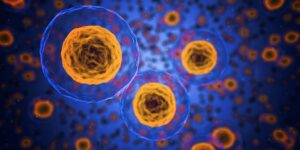

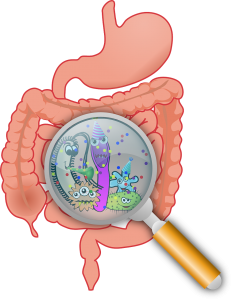
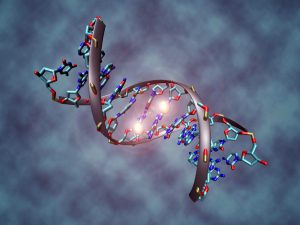
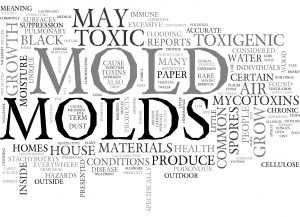
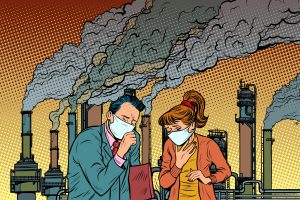 https://www.mdpi.com/1660-4601/13/3/264/htm
https://www.mdpi.com/1660-4601/13/3/264/htm